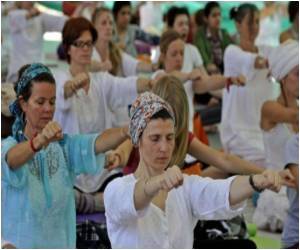In some much-needed boost for stroke therapies, an Indiana University study that exposed older veterans with stroke to yoga produced exciting results.

A range of balance items measured by the Berg Balance Scale and Fullerton Advance Balance Scale improved by 17 percent and 34 percent respectively by the end of the program. But equally exciting to lead researcher Arlene A. Schmid, rehabilitation research scientist at the Richard L. Roudebush VA Medical Center in Indianapolis, was the measurable gain in confidence the study participants had in their balance.
"It also was interesting to see how much the men liked it," said Schmid, assistant professor of occupational therapy in the School of Health and Rehabilitation Sciences at Indiana University-Purdue University Indianapolis. Many of the veterans wanted the study to continue or asked for a take-home exercise plan so they could continue the practice. "They enjoyed it so much partly because they weren't getting any other treatment. They had already completed their rehabilitation but felt there still was room for improvement."
Schmid will discuss her findings on Saturday during the American College of Sports Medicine meeting in Denver. Her poster presentation, "Preliminary Evidence of Yoga on Balance and Endurance Outcomes for Veterans with Stroke" will be from 7:30 a.m.-11 a.m. in Hall B in the session for Fitness and Performance Testing for Posture, Stability and Balance.
Statistics concerning strokes and falls are grim, with studies showing that strokes can quadruple the risk of falling and greatly increase the risk of breaking a hip after a fall. An estimated 80 percent of people who have strokes will also have some degree of impaired balance.
The study participants performed poses initially while seated in chairs and then progressed to seated and standing poses. Eventually, they all performed poses on the floor, something Schmid considers significant because of a reluctance many older adults have to working on the floor.
Advertisement
A score of less than 46 on the Berg Balance Scale indicates a fall risk. Schmid said the study participants on average began the study with a score of 40 and then improved to 47, moving them past the fall risk threshold. The study participants also showed significant improvements in endurance based on a seated two-minute step test and a six-minute walk test.
Advertisement
Source-Eurekalert














